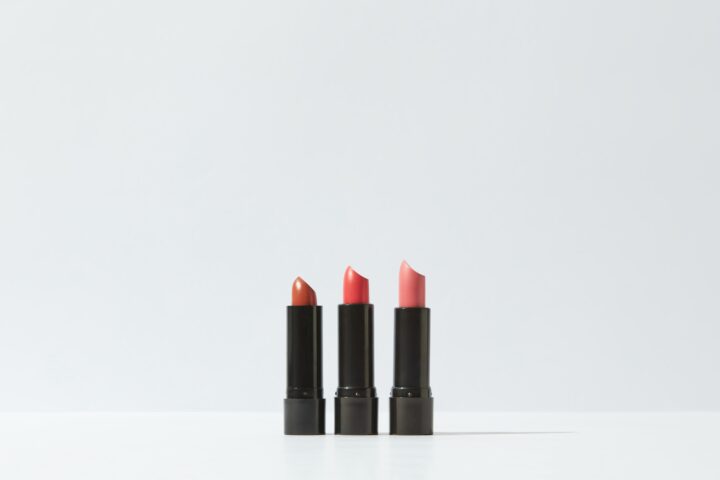If you have a beauty ecommerce brand, then you’ll have products to sell on your website or sales platform. And that usually means you’ll have to write product descriptions.
It sounds straightforward, but many people find writing product descriptions tricky, especially if they’re trying to do it themselves. Take a look at some of the product descriptions out there for brands you love (and hate). What works? What doesn’t? Would you buy based on the product description?
What is a product description?
A product description is a type of marketing copy that’s used to inform potential customers about your product. It covers the details of your product, includes key info and runs through the features and benefits of the product you’re selling. It’s a sales tool that makes up part of the buyer journey.
Product descriptions can be short or long, and they don’t have to be a set structure – but it’s worth considering the info that your customers need and what they’re actually going to read before they start out.
Tips for writing beauty product descriptions
Product descriptions are one of those things that sound straightforward and maybe even…not that important. This definitely isn’t the case, especially if you’ve got multiple products to add on site. They need to be informative, appealing and help your products to be found when potential customers are searching online.
Here are some things you need to keep in mind when it comes to writing product descriptions for your ecommerce website:
Use keywords
Keywords are a big thing for online content. It’s one of the ways that search engine algorithms work out what content to share with people who are searching. Don’t keyword stuff or think that writing keywords a hundred times and hiding them in the background will work – it won’t and could actually stop your website from being shown in search results.
Do your keyword research ahead of writing your product descriptions so that you can include some relevant keywords that will help your website to rank. This includes long-tail keywords too, as many people now use voice search or search for direct questions rather than just one word.
Make it interesting
This should go without saying. Your product descriptions are sales messaging and need to entice potential buyers to take action and add to basket. But how many product descriptions out there are just a bit…blah? It doesn’t have to be like this.
You don’t need to be try-hard or quirky (unless that’s the tone of voice you’re going for), but there are ways of turning your beauty product descriptions from dry to driving sales. Think about your target audience and how the speak online, then write your descriptions accordingly.
Share benefits as well as features
A really common mistake with product descriptions is just making it a bit long list of features of the products. While sharing features in your product descriptions is necessary and definitely has a purpose, it can be kind of boring if that’s all there is to your product descriptions.
Talk about the benefits of the products too – the “why they should buy”. It isn’t just a “red lipstick” it’s a “highly pigmented lipstick with colour stay technology for all day wear” or it’s the “softest silk lash extension that makes it easier and quicker to create lash fans” rather than just a “silk lash extension”.
Think about SEO
If you’re an ecommerce brand with a website, then you should be thinking about SEO. While it’s cute to have products that are called something abstract and fun, unless you have really strong brand awareness or product awareness, it’s unlikely that people will be searching for – or stumble across – your product. You need some keywords in there, as I’ve said.
For example, if your product is called something like the “Super Rich Hydrator”, it isn’t clear what that product actually is. If people are searching for a “rich moisturiser” but your SEO isn’t up to scratch, Google’s algorithm is unlikely to join the dots between your potential customer’s search intent and your product.
You don’t have to mess up your gorgeous product packaging, but it might make sense to include a very clear indicator of what your product is on your website and anywhere your products can be bought online. Think “Super Rich Hydrator Cream Moisturiser” over just “Super Rich Hydrator”. It just takes a little research.
Use your brand tone of voice
Having a brand tone of voice is important, but actually using it across your website – including for beauty product descriptions – is even more important. A strong tone of voice will help you connect with your customers and start to build consistency across your website. It’ll also help you build your brand.
If your tone of voice in emails and across your site is fun, flirty and young but your product descriptions read like a particularly bored robot churned them out one day, that’s a disconnect and could confuse (or turn off) your customers completely.
Familiarise yourself with where you’re selling
Different sales platforms have different structures, layouts and best practices. Writing a product description for an Amazon listing can be a little different to writing a product description for WooCommerce, Shopify or Wix.
The overall principles are usually the same (keywords, snappy titles, benefits and features etc) but where you need to include things, word counts and titles might work a little differently. Familiarise yourself with how your sales platform works and the best way to write the copy for your website before you start.
Don’t just copy and paste
If you have 50+ products to write descriptions for it can be tempting to just copy and paste certain sections and just swap out the key info, especially if they’re similar or there’s some set wording that you need to include.
This is a mistake. Search engines like Google will see that as duplicate copy and will penalise your web pages. It’ll decide that wherever the copy appeared first is the original, and might stop the rest of the pages from showing in search.
It also goes without saying that copying and pasting from other websites shouldn’t be done for the same reason, and also because plagiarism is seriously bad practice.
Include meta descriptions and alt text
Meta descriptions and alt text are often forgotten in ecommerce descriptions, but they’re pretty important. They help search engines work out what the page is and what images are, plus alt text in particular is useful for people who can’t see images so well. It can help with text readers, image search and explaining an image in the event of a weak connection.
They sound really complicated, but they’re not. Most ecommerce platforms will have spaces to include these defined in the back end of your site. You should use them (and make sure you include keywords). Make sure your images are good quality too.
Check out the competition
Copying the competition is bad. Checking out what they’re up to and seeing how they write their descriptions is good. It can help you benchmark, give you ideas about structure and spot mistakes that you might want to skip in your own product descriptions.
It can also help you to get a feel for the length, language and structure of product descriptions, especially if you’re just starting out or you’re planning on overhauling your content.
Test and update
One of the great things about online content is that it’s easy to change. You can do A/B testing (where you test two different types of content, pages or layout to see which one gets the best result), try different keywords or include more information as needed. If it doesn’t work out, you can always jump back to the original.
Definitely not saying that you should change your content on a daily or weekly basis, but sometimes refreshing your content can make a big difference to how many eyes are on the page, and how people take action.
Make sure they’re factual
As well as actually being fun, engaging and working as a sales tool, your product descriptions need to have the right information in there. Ingredients, weights, safety information and other key info needs to be accurate and correct.
This is to comply with your legal obligations, and to avoid misleading any customers. If you find it tough to keep track, something like a spreadsheet (many ecommerce sites actually have a spreadsheet that uploads to the site to update product descriptions) that contains all of the relevant info about each product can help you make sure it’s accurate. It’s also useful if anyone else needs to pick up your product descriptions when you’re not available.
Not everyone is great at spelling, and it’s really easy for a typo to slip in, especially if you’re in a hurry, but luckily there are a tonne of proofreading tools out there to help you spellcheck and proofread before you hit publish. It can be tempting to rely on them, but at the end of the day they’re just automated tools and you should definitely give your content the once over before you go live.
If you’re not confident at checking your own work, you’re tired or you’ve worked on something for so long that it doesn’t even look like words any more (we’ve all been there), enlist the help of an extra set of eyes to check it over for you. This could be a trusted friend, a professional editor or someone who fits into your target audience. You’ll be amazed at what they spot that you miss.
Use internal links
You might think that linking to other pages on your website in your product descriptions isn’t important, is bad (why would you want them to click away from your product?) or unnecessary.
Well, it’s none of the above. Internal links – that is, links to other pages on your website – help with search engine optimisation and help your customer to find relevant information about your products, services and brand. You should try and include them where it’s useful. Whether that’s additional product recommendations, links to important info or referencing blog posts.
Need help with beauty product descriptions?
If this all sounds like more work than you have time for – after all, you’re busy running a beauty brand – an experienced ecommerce writer can help you to write product descriptions for your website.
Check out my portfolio for some examples of beauty brand product descriptions I’ve written and get in touch if you need help to write beauty brand product descriptions that sell.


What Content Does a Beauty Brand Need? – Lucy Thorpe Content | Health & Beauty Writer
[…] or service, so having a professional website for your brand is important. This needs to include product descriptions, brand information as well as the legal […]